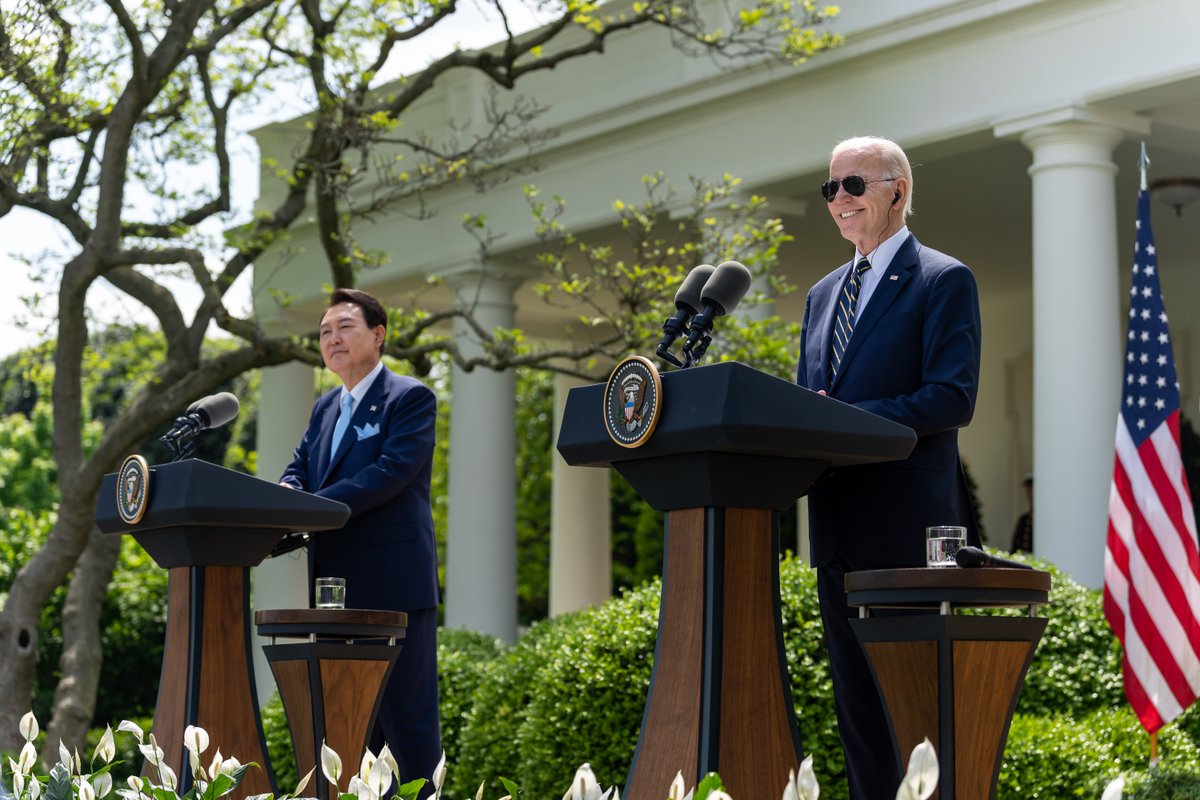ROK-US alliance 3.0 at 70
THE KOREA TIMES
APLN member Kim Won-soo points out that the verdict on the credibility and efficacy of Alliance 3.0 will depend on how the alliance responds to these challenges from China and North Korea. The original article is on The Korea Times website.
President Yoon Suk Yeol paid a state visit to the United States last week at a doubly symbolic moment. This year South Korea and the United States celebrate 70 years of partnership in arms. But the celebration takes place under cloudy skies fraught with mounting volatility and uncertainty for the global and regional orders.
Against this backdrop, President Yoon and U.S. President Joe Biden seem to have paid close attention to two primary tasks at their meeting. The first was to redefine the alliance in accordance with rapidly changing global and regional geopolitics. The second was to reassure the South Korean public that the United States was strongly committed to the defense of South Korea, including in the event of a nuclear attack by North Korea.
For the first task, both leaders affirmed that the alliance had now entered a new phase, which I will call 3.0 from hereon. Over the last seven decades, the alliance went through numerous ups and downs but proved to be resilient, withstanding challenges both internal and external to the alliance. It has evolved from a one-sided and Korean Peninsula-focused arrangement (1.0) to a more balanced yet still peninsula-focused (2.0) to a balanced and globally oriented (3.0). Now the alliance has matured enough to cover a variety of issues spanning security, politics, economy, culture and technology. Many of these issues have broad implications for all spheres of human life that include not only the Korean Peninsula and beyond, but cyberspace and outer space as well. The alliance has also grown to be more value-based, moving beyond the conventional national interest calculus. Universal respect for individual freedom, basic human rights and justice for all lies at the core of the alliance.
For the second task, the Washington Declaration offers some unprecedented language on U.S. extended deterrence and goes the extra mile in three significant ways. First, Washington makes clear that any nuclear attack by North Korea will be met with a resolute allied response in kind. Second, South Korea and the United States have agreed to create a Nuclear Consultative Group which will ensure the former’s greater participation in the latter’s nuclear planning process. This new addition is akin to North Atlantic Treaty Organization (NATO)’s Nuclear Planning Group in some fundamental aspects, while distinct from it in others. Third, Washington also makes clear that all strategic assets in the American nuclear triad, in particular the Navy’s ballistic missile submarines (SSBNs), will be regularly and frequently deployed to South Korea. In return for these American assurances, South Korea has reaffirmed its continued compliance with the obligations under the Treaty on the Non-Proliferation of Nuclear Weapons (NPT). This is a welcome development as it is expected to dampen the rising public support of late for South Korea pursuing its own nuclear weapons.
The Yoon-Biden summit helped lay solid groundwork for Alliance 3.0. But it does not guarantee that the road ahead will be smooth and easy. I am afraid the opposite is likely to prevail. Like almost everything else, every diplomatic deal comes with a cost. No diplomatic deal is free as it involves the other side.
An immediate scorecard for the summit seems to show largely positive ratings both in terms of the substance of the deals reached as well as diplomatic optics. But the jury is still out when it comes to the broader effects of the summit. China and North Korea must have followed the whole process closely and are expected to send out strong signals sooner or later.
The emergence of global value-based alliances inevitably means greater distancing between the two blocs, one led by the United States and its allies and the other by China and Russia. These blocs are split along the old East-West cleavages of the Cold War and tensions are growing fast between them. South Korea is likely to be sandwiched between its alliance partner (U.S.) and its largest trading partner (China) over such issues as value chains involving high-tech items and tensions in the East and South China seas including the Taiwan Strait. North Korea may react in an even more hostile manner than on previous occasions, potentially carrying out another nuclear test and/or missile launches.
The verdict on the credibility and efficacy of Alliance 3.0 will depend on how the alliance responds to these challenges from China and North Korea. The credibility of US assurances will be determined by the speed and effectiveness with which the allies respond to threats, as perceived by the South Korean public.
There is no denying that significant progress has been made through this summit. A new process has begun to redefine the future of the alliance for another 70 years. It requires close communication and coordination between Seoul and Washington to further increase the resilience and utility of the alliance. The onus is on the political leaders to deliver it not just for their respective countries, but also for the world.

